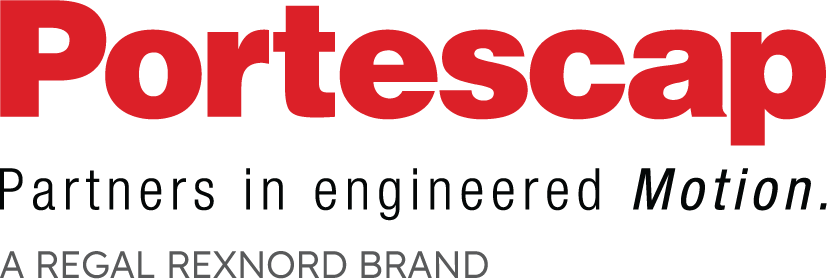
Hub Motor Design for Electric Bicycles
The electric bike, initially emerging in the 1890s as a symbol of affluence, has transitioned over the past century into an eco-friendly and accessible mode of transport, enhancing riders’ capabilities to conquer longer distances and steeper terrains. This article delves into the technical nuances of the electric motor powering eBikes, focusing on the cost-efficient and prevalent hub motor design.
The Types of Electric Motors in eBikes
An electric bike integrates an electric motor and battery into the drive mechanism of a bicycle to provide propulsion or propulsion assistance to the driven wheel (Figure 1). The electric motor is the key component in determining bike performance, with the two most common motors used being mid-drive motors and hub motors.
• Mid-Drive Motors. The mid-drive motor integrates with the pedal mechanism, transferring power through the bicycle’s chain and sprocket system. Advantages of this motor type include excellent weight distribution and reduced mass, making it well-suited for off-roading or navigating stiff gradients. However, they are also higher in cost due to the complexity of installation and the presence of additional moving parts. The maintenance of these systems tends to be more involved as well, requiring regular attention and specialized care.
• Hub Motors. The hub motor is the most common electric bike solution, being situated at the rear wheel’s center and made of fewer moving parts than mid-drive motors. This makes it a lower-cost and lower-maintenance (though less powerful) option that is ideal for flat and well-paved surfaces.
Hub Motor Design
The hub motor’s design replaces the traditional axle within the wheel hub with the motor shaft. The stator, comprised of copper windings, attaches to the axle, while the outer rotating section houses magnets affixed to the wheel hub. A feedback mechanism detects rotor position, facilitating current flow through the windings to rotate the wheel and aid propulsion. The hub motor itself is an outer rotating brushless DC motor design that incorporates a planetary gear train to enhance torque output.
Performance Attributes of Hub Motors
The performance specifications of a hub motor require a lightweight and compact package with high torque output at a high speed. Inherent design characteristics of BLDC motors force a trade-off between torque and speed. Desired performance can be achieved by adjusting motor design variables. For instance, motor diameter and length can be varied to affect available torque. Increasing motor length proportionally increases motor torque, while increasing its diameter increases the torque by the square of the proportional increase. The number of motor pole pairs also directly affects torque production, however, a higher pole count will result in lower maximum speeds. Motor efficiency, a key attribute of the hub motor, determines the range of the eBike per charge; it can also be determined by the choice of lamination steel, the slot shape that contains the copper windings, and the percentage of slot fill.
Hub Motor Design Tradeoffs
The design engineer must balance motor weight, compactness, efficiency, reliability, and cost to create a design that optimizes eBike performance. Additional factors include high power density, broad speed range, and robustness. Hub motor designers should incorporate these factors into a high-quality hub motor with the right materials and motor topology. To minimize motor length, a single or dual-stage planetary gear system is used, with a typical gear ratio of 4:1 or 5:1 for a single stage. The material selected for the gears should consist of a lightweight polymer, while the sun and ring gears should be manufactured with powder metallurgy. For smooth operation, the gear quality is DIN 8 to 9. These selections, in combination with a compact, high-efficiency motor, create the ideal solution for the electric bicycle.
Agency Certifications
The hub motor must also be designed and certified to meet the various safety regulations associated with the geographical region of operation. Proper testing and validations (usually through a 3rd party agency) are required to demonstrate that all regulations have been met. For example, units sold in Europe must comply with the EN-15194 standards.
Conclusion
Hub motors are a cost-efficient, low-maintenance option for electric bikes that will be used on flat surfaces. Brushless DC technology and a planetary gear system are critical components to the hub motor design process, ensuring the high torque output and efficiency that are vital for an eBike’s performance and range per charge. Portescap engineers are well-versed in hub motor design requirements. Reach out to our experts at www.portescap.com to start collaborating.
References:
https://www.alliedmarketresearch.com/electric-bikes-market
https://electrek.co/2018/06/07/electric-bicycle-hub-motors-vs-mid-drive/
https://www.ijert.org/research/design-and-development-of-modern-electric-bike-IJERTV9IS110270.pdf
Image 1: Figure 1: Electric Bike Components.
Image 2: Figure 2: Mid-drive motor at center of bicycle (left); hub motor in rear wheel of bicycle (right)
Image 3: Figure 3: hub motor in rear wheel of bicycle.
Image 4: Figure 4: Exploded view of hub motor internal components.
Image 5: Graph 1: Typical Hub Motor Performance Curve (Torque vs Speed)
Portescap offers the broadest miniature and specialty motor products in the industry, encompassing coreless brush DC, brushless DC, stepper can stack, gearheads, digital linear actuators, and disc magnet technologies. Portescap products have been serving diverse motion control needs in wide spectrum of medical and industrial applications, lifescience, instrumentation, automation, aerospace and commercial applications, for more than 70 years.
Portescap has manufacturing centers in the United States and India, and utilizes a global product development network with research and development centers in the United States, China, India and Switzerland.
For more information, visit www.portescap.com
Editorial Contact: Anne-Marie Howe
Tel: +44 (0)1905 917477
Web: news.dmaeuropa.com
Email: press-team@dmaeuropa.com
Address: Progress House, Midland Road, Worcester, Worcestershire, WR5 1AQ, United Kingdom
Reader Contact:
Portescap: Nicole Monaco
Tel: +1 404.877.2534